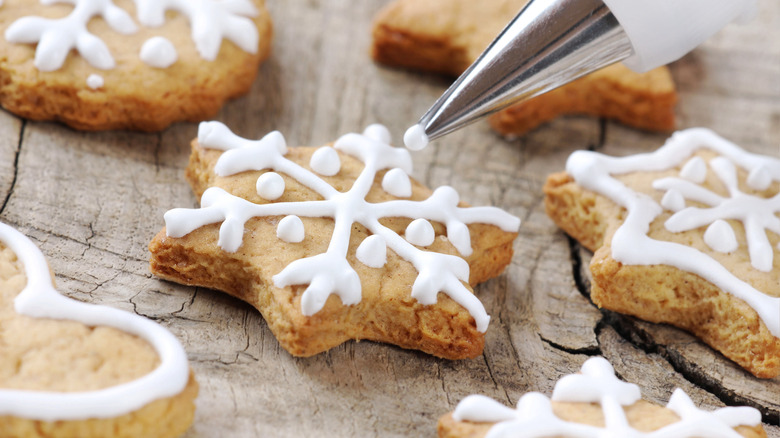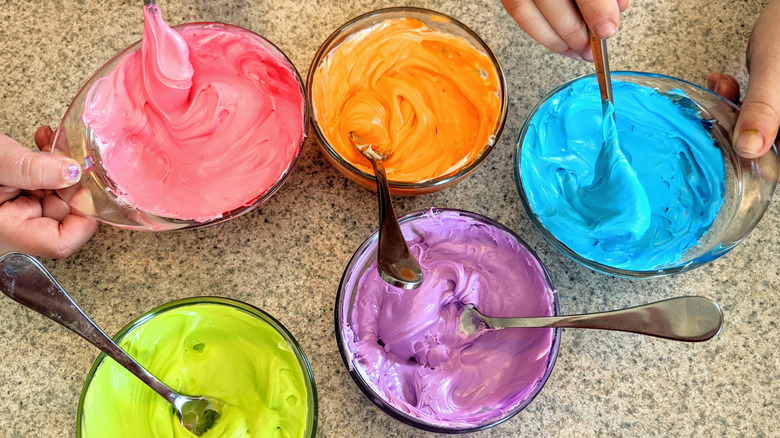Piping Royal Icing? This Is How You Know It's The Right Consistency
Baking sugar cookies is no easy task, but thin cookies with pristine shapes make the effort worthwhile. Well-made sugar cookies are also way more inviting to decorate. Royal icing is the best choice for decorating because it can be used to make intricate designs and dries hard with an elegant, matte sheen. However, it's finicky, so knowing a few key tips can help at-home bakers pipe like the pros.
There are two basic royal icing consistencies that every baker should prepare before decorating cookies — piping consistency and flooding consistency. Flooding consistency is important to the base layer of the cookie's icing; it's thinner and runnier for more spread. Piping icing has a much thicker consistency and a wide-ranging use. The biggest technical mistake to avoid when icing cookies is not preparing piping icing. This icing is piped in an outline around the cookie so that the flood icing does not run off the edges. It is also thick enough to make decorations in neat lines without them spreading, for instance, the face of a gingerbread man. However, how do you know when piping icing is the right consistency? Well, a few visual and textural queues let bakers know when their icing is thick enough.
Piping icing must hold its shape
While flooding icing is runny and spreadable, piping icing must be thick enough for it to hold its shape while being piped. The consistency is often described as similar to toothpaste or soft-serve ice cream. When you squeeze toothpaste onto a toothbrush, it holds its shape, just as soft serve ice cream (if it didn't melt) maintains its signature swirls. This icing will form curly-peaked mountains when the spatula is pulled out. To the baker's eye, it's thick, yet still flows as it is stirred. When it is piped, the icing should make crisp lines that stay in place.
The ingredients for a basic royal icing include powdered sugar, egg whites, and lemon juice. A splash of water can help thin the icing out, and more powdered sugar can be used to thicken the icing. Take caution and work in small increments — a little can go a long way to alter the icing's consistency. If you're finding your icing has been sitting out too long and is losing its form, white vinegar can stabilize royal icing in a flash. It reacts with the whipped egg whites to give back some bubbly volume and prevent runniness. Royal icing may not be the most forgiving, but you can always scrape off any piping mistakes and try again after making well-estimated ingredient adjustments.

